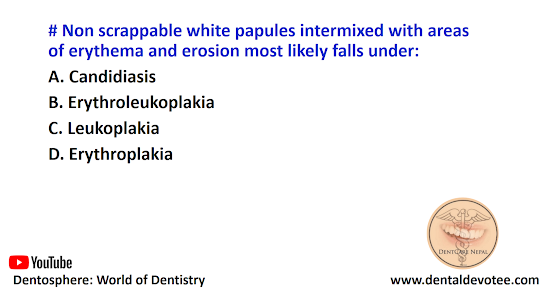# Non scrappable white papules intermixed with areas of erythema and erosion most likely falls under:
A. Candidiasis
B. Erythroleukoplakia
C. Leukoplakia
D. Erythroplakia
The correct answer is B. Erythroleukoplakia.
The term 'non homogeneous' is ascribed to lesions with two different features, usually having both red and white areas, but also to all those without redness but containing verruciform exophytic elements. Due to the combined appearance of white and red areas, the nonhomogeneous oral leukoplakia has also been called erythroleukoplakia and speckled leucoplakia. The clinical manifestation of the white component may vary from large white verrucous areas to small nodular structures. If the surface texture is homogeneous but contains verrucous, papillary (nodular), or exophytic components, the leukoplakia is also regarded as nonhomogeneous.







